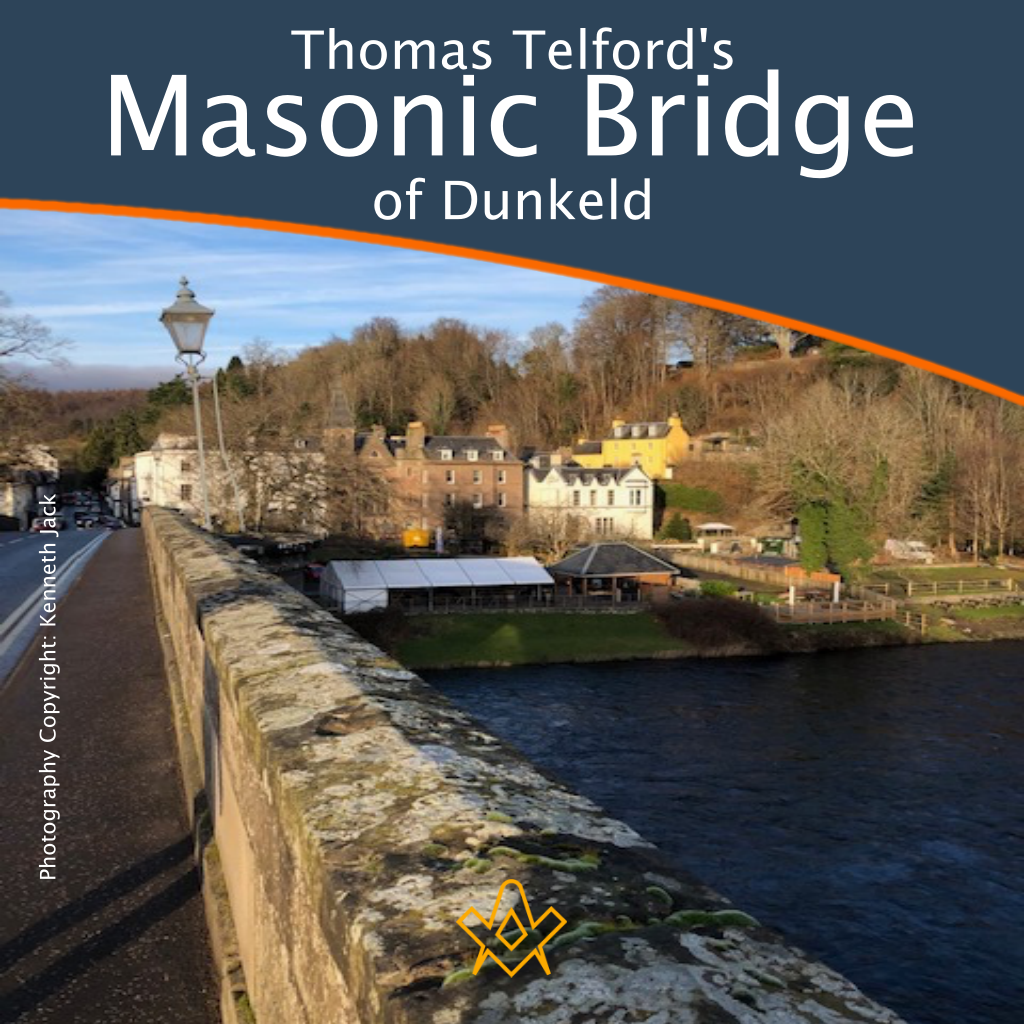Of course, there is no such thing as a ‘Masonic Bridge’; but if any bridge is deserving of such an epithet, then the Bridge of Dunkeld is surely it.
Designed by Scotsman Thomas Telford, one of the most famous Freemasons in history; financed in part by a former Grand Master of the Grand Lodge of Scotland; built by stonemasons—many belonging to a local Operative Masonic Lodge
—according to an arched structure and ceremonially opened by Freemasons from local Lodges headed by said Grand Master; it effectively was a Masonic enterprise.
The Masonic Bridge of Dunkeld
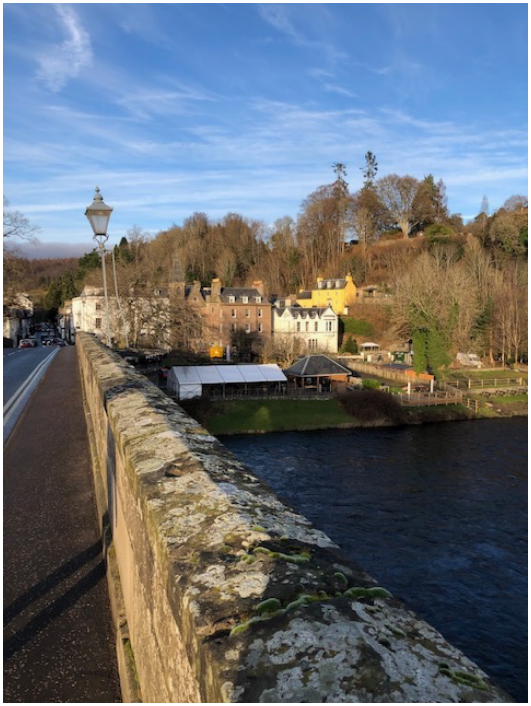
Telford Bridge, Dunkeld
IMAGE CREDIT: Kenneth Jack
Dunkeld is a picturesque village situated in the heart of Perthshire, Scotland, and with its ancient cathedral, scenery, and beauty spots; it can readily claim to be one of the jewels in the crown of Scottish tourism.
It is situated about 14 miles north of Perth, on the north bank of the mighty River Tay, which separates the village from its sister village on the South side, Birnam—a village made famous by William Shakespeare in his play Macbeth.
Both villages are situated on the lands of Atholl Estate, formerly the hereditary lands of the Dukes of Atholl, many of whom were intimately connected to Freemasonry in both Scotland and England.
It is thought that Dunkeld originated in the 5th Century AD as a Pictish community, but in the 6th Century it became a Christian settlement probably founded by St. Columba.
In the mid 9th Century it became the Ecclesiastical capital of Scotland and King Kenneth of Alpin is said to have removed the relics of St. Columba from Iona to Dunkeld for safe-keeping from the Vikings.
The town of St. Andrews eventually became the headquarters of the Church of Scotland and Dunkeld lost much of its power and influence.
It was not until 1127 when Roman Catholicism overtook the Celtic church that Dunkeld came to the fore once more; when influential Bishops built Dunkeld Cathedral.
During this period, a number of unsuccessful attempts were made to bridge the River Tay at Dunkeld.
A bridge, known as Bishop Brown’s Bridge, is thought to have been built in 1520, and appears to have been a fairly substantial masonry bridge.
This bridge collapsed around 1873, and because the River Tay is known for flooding, the bridge was either washed away by the floods, or disassembled for other building projects.
The religious community of Dunkeld had dispersed by this time, and with it, the desire to build a replacement. Until Telford built his bridge over 200 years later, the residents of Dunkeld relied on ferries to cross the River.
There were two ferries running on the River Tay at Dunkeld, the lower or East Ferry, situated adjacent to Little Dunkeld Church, and the Inver or West Ferry, situated a mile upstream from Dunkeld. Both ferries were owned by the 4th Duke of Atholl the local landowner, who rented them out to a ferryman.
John Murray, the 4th Duke of Atholl was born on 30 June 1755 and was a key figure in the history of Freemasonry in the British Isles.
His father, the 3rd Duke of Atholl was elected Grand Master Mason of Scotland in 1773. However, he died the following year, and there was much consternation regarding who would succeed him, as young John was not yet a Freemason.
But such was the desire to have a nobleman at the head of the Order, when the 4th Duke resolved to join the Craft, his progress was swift, so swift in fact that on 25 February 1775, he was Entered, Passed and Raised to the sublime degree of Master Mason, and installed as Master of the Grand Masters Lodge No. 1, all on the same evening.
He was installed as Grand Master of the ‘Ancient’ Grand Lodge in England on 25 March 1775. He held the position until 1781; and then again between 1791 and 1813.
He was also Grand Master Mason of Scotland between 1778 and 1789.
It is not the purpose of this essay to discuss the opposing Grand Lodge bodies in England at this time; suffice it to say that the other Masonic Grand body extant in England was the ‘Moderns’ with whom the ‘Ancients’ shared much acrimony.
Because the Dukes of Atholl were so closely associated with the latter body, the ‘Ancients’ were referred to as ‘Atholl Masonry, meeting in so-called ‘Atholl Lodges’.
To his credit, the 4th Duke of Atholl did much to heal the rift between the two bodies, and they eventually united in 1813.
In the early 19th century, the roads in Scotland were in a poor state of repair. The roads that did exist were a combination of military roads built by General Wade, or paths trodden smooth by the feet of dozens of highlanders and their hoofed cattle; making there way to and from the large Trysts held at the likes of Crieff and Falkirk.
These ‘roads’ were no longer conducive to efficient travel and communication, and as such, detrimental to the economy of the country.
The government of the day decided to embark on a project to improve the infrastructure of the Highlands.
Engineer Thomas Telford was instructed to carry out a survey of the roads and harbours, with a view to improving communication to the North of Scotland and to the Islands, which would be a considerable boost for trade; with particular emphasis on the fishing industry on the West and East coasts.
The Government also saw this as a means of helping to stem the flow of emigration from Scotland.
Thomas Telford was born on 9 August 1757 at Westerkirk, Langolm, Dumfries; the son of a local shepherd who died soon after Thomas was born, leaving his mother to raise him.
He became an apprentice stonemason in the early part of his life, and one of his first tasks was assisting in building a stone bridge over the River Esk.
His mason mark is said to still be visible on one of the stones of the bridge.
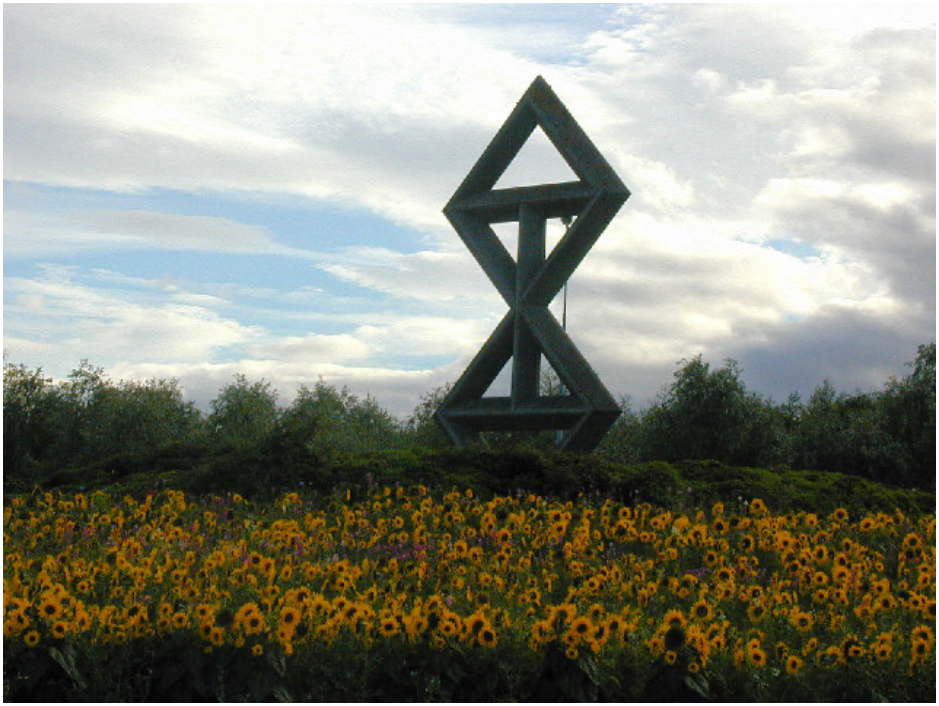
A sculpture of Thomas Telford’s Mason Mark, at Limekiln Bank Roundabout, Telford, Shropshire. Erected in 1986.
IMAGE CREDIT: copyright Bob Bowyer (cc-by-sa/2.0)
Telford rose to become one of the most famous and accomplished engineers of his time; building a vast number of bridges, canals, docks, harbours and roads.
In Scotland alone, he built: 1,076 bridges, 1,200 miles of road, and numerous harbours. One of his most famous projects was the Caledonian Canal between Fort William and Inverness.
He also engaged in many building projects abroad, and when he died on 2 September 1834, he was given the honour of being laid to rest in Westminster Abbey in London.
Telford was a keen and committed Freemason. He seems best known as member of Lodge Salopian, then 525, on the Roll of the Premier Grand Lodge of England.
On 7 July 1789, he acted as Senior Warden at a meeting of that Lodge, the highest office he ever attained. However, he is believed to have been initiated into the Craft in Lodge of Antiquity 18, on 17 December 1784.
This Lodge ceased to exist by 1838, and he became a founder member of the Phoenix Lodge which met in Portsmouth, where he was working at the time.
Writing from that town on 1 February 1786, he reported: “I am taking a great interest in Freemasonry, and I am about to have a Lodge-room fitted up after my plans, and under my direction.”
In the summer of 1802 Telford embarked on a tour of the Highlands during which time he consulted with the 4th Duke concerning the possibility of replacing the Duke’s two ferries with a bridge.
The Duke agreed to pay half the cost of building the bridge; provided the government paid the remainder, and agreed to charge tolls on the bridge as a means of recouping the Duke’s outlay.
The government was keen to proceed with a bridge for commercial reasons, and the fact that ferries were susceptible to accidents.
Indeed, a fatal accident had occurred on the East Ferry as early as 1766 in which 6 persons died as a result of the ferry being dashed against a croy (a structure to protect a riverbank) due to the force of high water.
The estimated cost of the bridge was £15,000, of which the government were also to pay half.
The Duke of Atholl then took steps to legitimise the building of the bridge by way of an Act of Parliament, which was granted on 17 May 1803.
This Act empowered the Duke to charge tolls until such time as he recovered his part of the bridge-building costs, and also to provide funds for the upkeep of the bridge.
The introduction to the Act permitting the construction of the bridge stated in part:
Whereas the two Ferries upon the River Tay at or near the town of Dunkeld in the county of Perth, called the Ferry of Invar, and the Lower East Ferry, are often liable to great interruptions, and the passage across said River is sometimes attended with considerable danger owing to the rapidity of the said river, whereby the communication between the Northern and Southern parts of Great Britain is much impeded.
A start was made to the construction of the bridge on 24 June 1805, and at 10 o’clock that day a short stone-laying ceremony took place.
The Duke of Atholl was otherwise engaged, so the ceremony was carried out by Sir George Stewart, who laid the first stone. Alexander Niven, the local Minister, gave the project his blessing in the form of a prayer.
The workmen were each given a dram (a small portion of something to drink) and assured that the Duke would return at a later date to lay a foundation-stone on the south pier of the central arch of the bridge.
There is no evidence to suggest that this ever happened, although the Duke did attend a later opening ceremony along with Freemasons from the two local Lodges and various other dignitaries.
The bridge was subsequently built according to Telford’s design at a cost of £34,000; the government paying £7,000, leaving the Duke to raise the outstanding amount of £27,000 from tolls.
The bridge took the form of seven arches or spans: one measuring 90 feet, two measuring 84 feet, two measuring 74 feet, and two land arches measuring 20 feet.
The road over the bridge including both pavements was 28.5 feet wide. Many of the problems one might expect to hamper the building of the bridge took place: weather problems, labour issues, and accidents, but the bridge was eventually open to the public in October 1808—although at that time the bridge parapets were not in place.
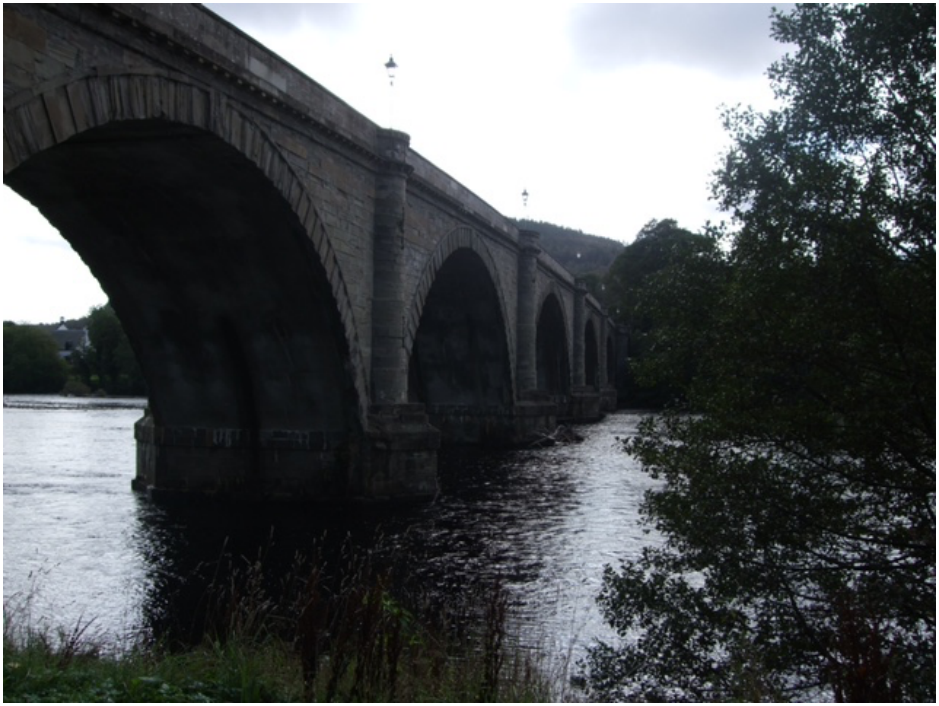
The arches of Telford Bridge, Dunkeld.
IMAGE CREDIT: Kenneth Jack
The oldest extant newspaper contained within the archives of the Local Studies Department at the A.K. Bell Library in Perth, Scotland, is the Dundee, Perth, and Cupar Advertisers; OR,
Perth, Fife, and Angus, Shires Intelligencer.
The issue of Friday, 18 November 1808, carries the following report of the official opening ceremony for the bridge:
BRIDGE OF DUNKELD
Dunkeld Nov. 7 – This day had been fixed upon, some time previously, for opening the bridge of Dunkeld to the public, and which accordingly exhibited a scene of interest and gaiety worthy of the occasion.
On the 24th June, 1805, the foundation-stone of this bridge was laid; and when the magnificence, the experience, and the many difficulties attending the execution are considered, it will not be surprising that it should have taken upwards of three years in building.
The character of the building is simplicity, strength, and magnificence. It consists of seven arches, the largest ninety feet in span, making part of a circle as retire from the centre. The two uppermost are of the same site, and perfect semi-circles, standing upon an elevated base. It is built of hewn stone, of a pale white colour, and the venerable Cathedral of Dunkeld in ruins, but not by the ravages of time, bears testimony to its durability.
His Grace the Duke of Atholl, The Grand Master of the Old Lodge of Dunkeld, had requested the attendance of his brothers of both Lodges; and although the notice was very short, nearly 200 of the brethren assembled; and joining according to their usual custom, walked in Masonic procession to a place nearly in the centre of the bridge.
Here they were joined by numerous assemblage of nobility and gentry, who accompanied the Duke of Atholl to witness the ceremony.
Among these we particularly noticed the elegant and amiable Duchess, Lady Amelia Murray, Miss Murray, Miss Knight, Miss Mary Hay, Lord Charles Murray, the Hon. Walter Forbes, and other respectable friends, who generally compose their Graces family, the earl and Countess of Mansfield, with their charming and interesting little daughter, Lady Frederick Murray, Lord and lady Keith, The Hon. Miss Mercer Elphinstone, (the accomplished heiress of Meiklour,) the Hon. Mr and Mrs Drummond Burrell, Hon. Colonel Cadogan, Hon. Archibald MacDonald, and Mr. Sinclair, Sir Alexander Muir Mackenzie, with their eldest daughter Miss Murray, sister of Sir James Pultney, Mr, Mrs, and Miss Dick of Tullymett, Lieut. Colonel Harris, and Major O’Connel of the 73rd regiment, and other persons of distinction.
After placing a heavy stone on the parapet wall of the bridge, with Masonic ceremony, the Rev. Mr. Alexander Niven, Minister of Dunkeld, addressed the Supreme Being in an appropriate prayer, in which he was devoutly joined by everyone present.
The scene and circumstances were too interesting not to excite the warmest feelings of devotion in every breast recognising the care and protection of Divine Providence.
This finished, the procession proceeded along the bridge to the south abutment, and returned immediately to the centre arch, where provision was made for the whole company drinking the health of the day, and other appropriate toasts.
The King and the Craft, and the brave Spaniards were not forgotten. The brethren afterwards returned to procession, to their respective Lodges, where however they did not long remain; for the whole operative Masons, who had assisted in building the bridge, the carpenters and labourers who had been any way employed at the work, were invited by the Duke of Atholl to dinner.
Considerably above 200 sat down to a sumptuous entertainment, of which they were heartily encouraged to partake, by the presence, for a considerable time, of his Grace.
At half past six, a company of between 40 and 50 sat down to a dinner, worthy of the occasion, and of the Noble Host and Hostess who presided at it. Nothing could exceed the good humour and cheerfulness of the whole company.
After several appropriate toasts proposed by the Noble Duke, Lord Keith requested leave to give as his toast, the Duke, the Bridge, and the 7th November, prefacing his toast with a few remarks respecting the magnificence of the work, its public utility, and the munificence of the Nobleman, at whose sole expense almost, and by whose exertions, it had been carried on.
About 10 o’clock, the dancing commenced, which was kept up with great spirit till early in the morning, when the whole party sat down to supper.
Two Masonic Lodges existed in Dunkeld in 1808: St. John’s Lodge 14, and The Operative Lodge of Dunkeld 152.
The first page of volume two of the Minutes of the Operative Lodge indicate some tensions between operative and speculative Masons within the village:
“The Operative Lodge was first set footing in 1760 by a number of Brethren who separated from the ‘Olde Lodge’ on account of some differences between them and their Speculative Brethren which would be tedious and unsafoury [sic] here to mention.”
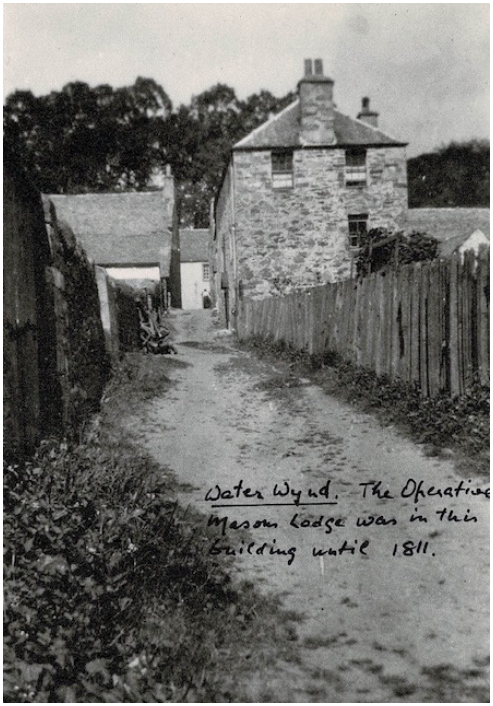
Water Wynd, Dunkeld. Lodge Operative 152 met in this building until 1811.
IMAGE CREDIT: Courtesy Chapter House Museum/Dunkeld Community Archive
Both Lodges took an active part in the opening ceremony on 7 November 1808. The minutes of the Operative Lodge for that date state:
A Lodge being mete [sic] according to appointment of both Lodges, both Lodges mete and walked in procession as usual to celebrate the opening of the Bridge of Dunkeld.
When coming to the top of the first arch we made a halt when His Grace the Duke of Atholl laid upon the parapet wall.
Afterwards, Mr Niven, Minister of Dunkeld gave us an appropriate prayer suitable to the occasion.
We then walked to the South end of the Bridge and returning to the centre arch halted and drank several toasts to the honour of the occasion.
Our Worshipful Master having gote [sic] three pounds from His Grace the Duke of Atholl as is suposed [sic] by the hands of Robt. Cargill, a small sum to the amount of a few shillings being wanted to clear-(?) It was agreed to be taken out of the funds.
The Secretary of St. Johns Lodge reported in his Minutes of the day:
The Lodge being assembled by order of the Right Worshipful Master, it was opened by the W.D. Master (here follows a paragraph on new members applying to join).
A Deputation was ordered to attend His Grace, John, Duke of Atholl, the Master, from his house to the Lodge. Who, on entering the Lodge, took the chair. The W.M. Master, the W.D. Master, S. Master, Senior and Junior Wardens, Secretary, Treasurer, other office bearers, and a great many brethren present.
The W. Master informed the brethren that he had assembled this Lodge on the opening of Dunkeld Bridge that the members on this memorable day walk in procession to the Bridge, along with Operative Lodge as had been previously agreed on by the Masters of both Lodges. And that we might testify our joy at so great an undertaking being so completely accomplished.
It being announced that the Operative Lodge were attending at the door, the Lodge of St. John immediately joined and both Lodges walked in procession to the Bridge.
Upon the W. Master of the Lodge St. John coming to the spot where the Operative Masons were at work both Lodges halted when Brother John Strapman, overseer of the work, in the presence of both Lodges laid a stone on the parapet wall.
Our Chaplain, the Reverend Alexander Niven, then gave a suitable and impressive prayer on the occasion.
The Lodges then proceeded to the South end of the bridge and returned. The Masters and Office-Bearers of each Lodge halted their respective Lodges.
Ammunition being prepared (of which the Duchess of Atholl and several other ladies who were with her partook) and a number of suitable toasts given by the Masters of both Lodges.
The Lodges then proceeded on returning to the Lodge, there being no other business, it was shut with the usual ceremony.
Thomas Telford was on site— as he frequently was during the course of the construction— in November 1809, to inspect the bridge and to certify its completion.
In a portent of things to come two centuries later on the Isle of Skye, residents of Dunkeld eventually reneged against the bridge tolls and there were riots on the bridge until such time as the tolls were eventually abolished.
Stonemason James Young wrote a poem to commemorate the stone-laying ceremony which took place at the bridge on 24 June 1808. Here are a few selected verses:
Religion itself, that divine revelation,
Hath varied its maxims all over the nation;
And Bishops have yielded their powerful Sway,
And Presbyters rule on the banks of the Tay”.
“The plan being designed’d by men who’re well skill’d,
Carry’d on by free Masons, who are good Will’d;
May success attend them, and her powerful Swan,
Till they bind in strong arches, the rough raging Tay”.
“When the centres are set, and the arches complete,
With the legions extended, both robust and Neat,
The traveller, tho’ blind, can hold on his Way,
Once he enters the Bridge, o’er the rough raging Tay.
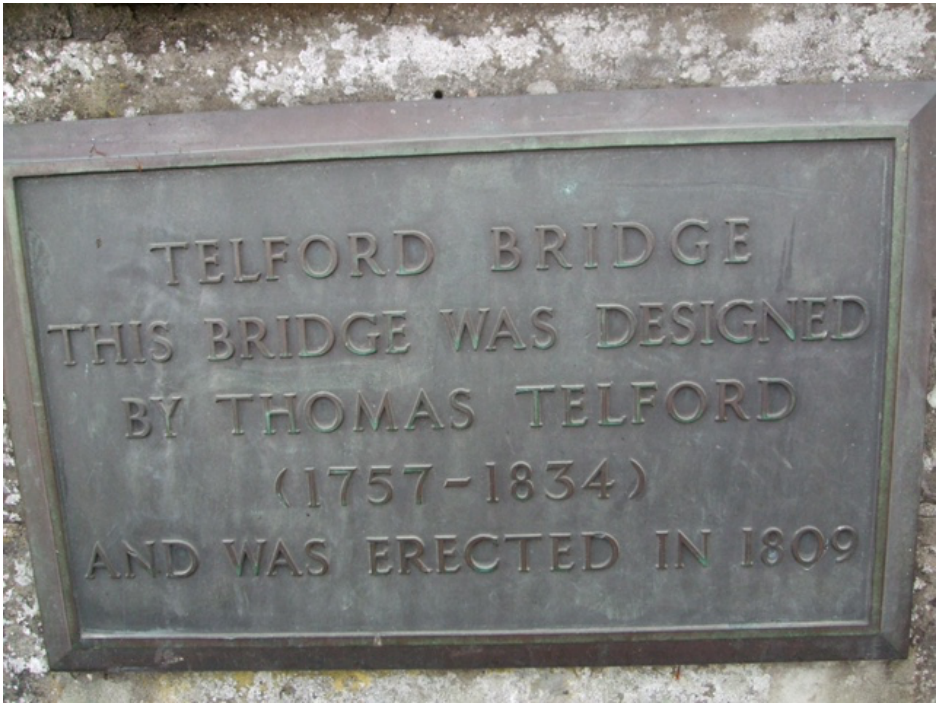
Commemorative plaque marking the erection of Telford Bridge, Dunkeld.
IMAGE CREDIT: Kenneth Jack
The Telford Bridge at Dunkeld still stands proudly today. It is still of great public utility, hosting as it does, thousands of pedestrians and vehicles every year.
But without doubt, it is also a fitting monument to the genius of Thomas Telford, its Freemason designer— and to the Masons, both Operative and Speculative, who helped finance and build it.
ACKNOWLEDGEMENT
The Author wishes to express his thanks to Brother James McDonald, Past Master of the United Lodge of Dunkeld 14; for helping to provide access to the 1808 Minutes of St. Johns Lodge 14, and the Operative Lodge 152, Dunkeld.
Article by: Kenneth C. Jack
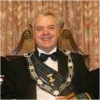
Kenneth C. Jack FPS is an enthusiastic Masonic researcher/writer from Highland Perthshire in Scotland.
He is Past Master of a Craft Lodge, Past First Principal of a Royal Arch Chapter, Past Most-Wise Sovereign of a Sovereign Chapter of Princes Rose Croix.
He has been extensively published in various Masonic periodicals throughout the world including: The Ashlar, The Square, The Scottish Rite Journal, Masonic Magazine, Philalethes Journal, and the annual transactions of various Masonic bodies.
Kenneth is a Fellow of the Philalethes Society, a highly prestigious Masonic research body based in the USA.
Recent Articles: Kenneth C. Jack
 Observations on the History of Masonic Research Archaeology is often associated with uncovering ancient tombs and fossilized remains, but it goes beyond that. In a Masonic context, archaeology can be used to study and analyze the material culture of Freemasonry, providing insight into its history and development. This article will explore the emergence and evolution of Masonic research, shedding light on the challenges faced by this ancient society in the modern world. |
 Anthony O'Neal Haye – Freemason, Poet, Author and Magus Discover the untold story of Anthony O’Neal Haye, a revered Scottish Freemason and Poet Laureate of Lodge Canongate Kilwinning No. 2 in Edinburgh. Beyond his Masonic achievements, Haye was a prolific author, delving deep into the history of the Knights Templar and leaving an indelible mark on Scottish Freemasonry. Dive into the life of a man who, despite his humble beginnings, rose to prominence in both Masonic and literary circles, leaving a legacy that continues to inspire. |
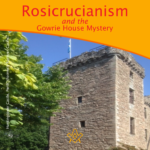 Rosicrucianism and the Gowrie House Mystery Unearth the mystifying intersections of Rosicrucianism and the infamous Gowrie House Mystery. Dive into speculative claims of sacred knowledge, royal theft, and a Masonic conspiracy, harking back to a fateful day in 1600. As we delve into this enthralling enigma, we challenge everything you thought you knew about this historical thriller. A paper by Kenneth Jack |
 Thomas Telford's Masonic Bridge of Dunkeld Of course, there is no such thing as a ‘Masonic Bridge’; but if any bridge is deserving of such an epithet, then the Bridge of Dunkeld is surely it. Designed by Scotsman Thomas Telford, one of the most famous Freemasons in history. |
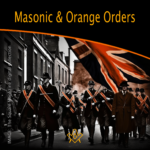 The masonic and orange orders: fraternal twins or public misperception? “Who’s the Mason in the black?” |
 Kenneth Jack's research reveals James Murray, 2nd Duke of Atholl – the 'lost Grand Master' |
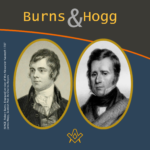 An Oration delivered to the Annual Burns and Hogg Festival, at Lodge Canongate Kilwinning, No. 2, Edinburgh, on 24 January 2018. By Bro. Kenneth C. Jack, FSAScot FPS, Past Master, Lodge St. Andrew, No. 814, Pitlochry. |
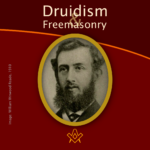 William Winwood Reade was a Scottish philosopher, historian, anthropologist, and explorer born in Crieff, Perthshire, Scotland. The following article by Kenneth Jack, provides some hints that William may have been a Freemason, but there is presently no definitive evidence he was. |
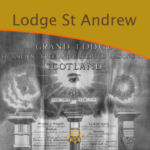 What's in a name? A brief history of the first Scottish Lodge in Australia - By Brother Kenneth C. Jack, Past Master, Lodge St. Andrew, No. 814, Pitlochry |
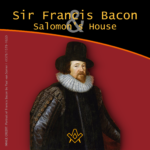 Sir Francis Bacon and Salomon’s House Does Sir Francis Bacon's book "The New Atlantis" indicate that he was a Rosicrucian, and most likely a Freemason too? Article by Kenneth Jack |
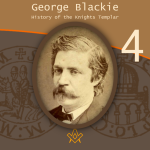 George Blackie – The History of the Knights Templar P.4 The final part in the serialisation of George Blackie's 'History of the Knights Templar and the Sublime Teachings of the Order' transcribed by Kenneth Jack. |
 George Blackie – The History of the Knights Templar P.3 Third part in the serialisation of George Blackie's 'History of the Knights Templar and the Sublime Teachings of the Order' transcribed by Kenneth Jack. |
 George Blackie – The History of the Knights Templar P.2 Second part in the serialisation of George Blackie's 'History of the Knights Templar and the Sublime Teachings of the Order' transcribed by Kenneth Jack. |
 George Blackie – The History of the Knights Templar P.1 First part in the serialisation of George Blackie's History of the Knights Templar and the Sublime Teachings of the Order – by Kenneth Jack |
 Little known as a Freemason, Bro Dr Robert ‘The Bulldog’ Irvine remains a Scottish rugby legend, and his feat of appearing in 10 consecutive international matches against England has only been surpassed once in 140 years by Sandy Carmichael. |
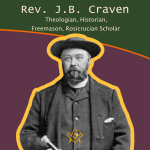 Rev. J.B. Craven: Theologian, Historian, Freemason, And Rosicrucian Scholar Archdeacon James Brown Craven is one of those unsung heroes of Scottish Freemasonry about whom very little has been previously written – here Kenneth Jack explores the life and works of this remarkable esoteric Christian. |
 Discover the powerful family of William Schaw, known as the 'Father of Freemasonry' |
 This month, Kenneth Jack invites us to look at the life of Sir William Peck; - astronomer, Freemason and inventor of the world's first electric car. A truly fascinating life story. |
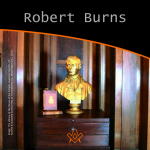 A Tribute to Scotland's Bard – The William Robertson Smith Collection With Burns' Night approaching, we pay tribute to Scotland's most famous Bard – The William Robertson Smith Collection |
 The Joy of Masonic Book Collecting Book purchasing and collecting is a great joy in its own right, but when a little extra something reveals itself on purchase; particularly with regards to older, rarer titles.. |
 Masons, Magus', and Monks of St Giles - who were the Birrell family of Scottish Freemasonry? |
 The 6th Duke of Atholl - Chieftain, Grand Master, and a Memorial to Remember In 1865, why did over 500 Scottish Freemasons climb a hill in Perthshire carrying working tools, corn, oil and wine? Author Kenneth Jack retraces their steps, and reveals all. |
 Charles Mackay: Freemason, Journalist, Writer Kenneth Jack looks at life of Bro Charles Mackay: Freemason, Journalist, Writer, Poet; and Author of ‘Tubal Cain’. |
 A Mother Lodge and a Connection Uncovered, a claim that Sir Robert Moray was the first speculative Freemason to be initiated on English soil. |
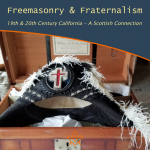 What is it that connects a very old, well-known Crieff family, with a former President of the United States of America? |
 The life of Bro. Cattanach, a theosophist occultist and Scottish Freemason |
 The Mysterious Walled Garden of Edzell Castle Explore the mysterious walled garden steeped in Freemasonry, Rosicrucianism, and Hermeticism. |
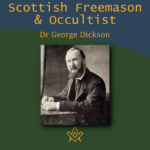 Dr. George Dickson: Scottish Freemason and Occultist Bro. Kenneth explores the life of Dr George Dickson a Scottish Freemason and Occultist |
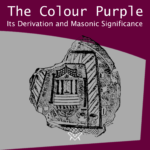 The Colour Purple - Its Derivation and Masonic Significance What is the colour purple with regards to Freemasonry? The colour is certainly significant within the Royal Arch series of degrees being emblematical of Union. |
 Bridging the Mainstream and the Fringe Edward MacBean bridging mainstream Freemasonry with the fringe esoteric branches of Freemasonry |
 Freemasonry in the Works of John Steinbeck We examine Freemasonry in the Works of John Steinbeck |
 Renegade Scottish Freemason - John Crombie Who was John Crombie and why was he a 'renegade'? |
 Scottish Witchcraft And The Third Degree How is Witchcraft connected to the Scottish Third Degree |
masonic knowledge
to be a better citizen of the world
share the square with two brothers

click image to open email app on mobile device


